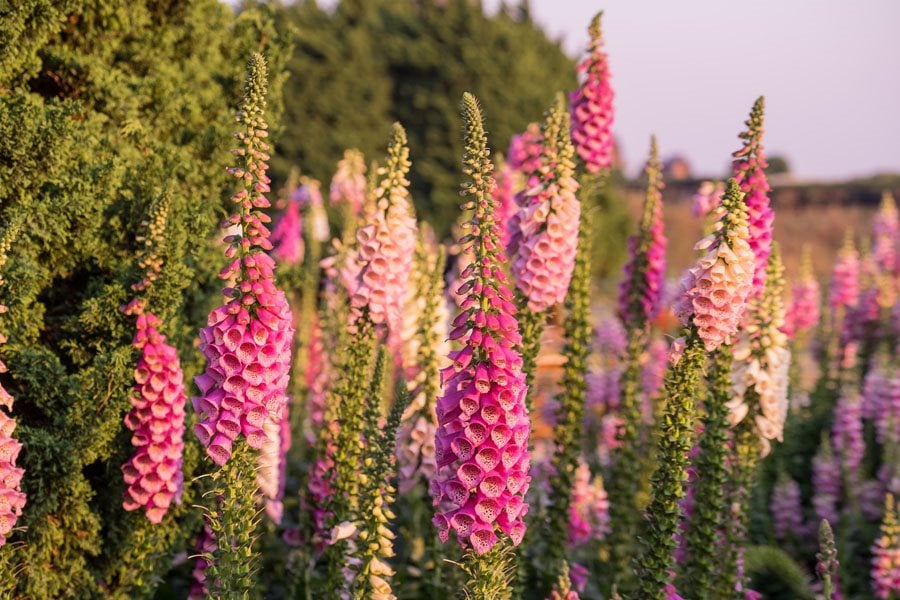Finding the Perfect Foxgloves for Your Garden
With their tall spires of tubular flowers, foxgloves add graceful elegance to cottage gardens, borders, and wildflower meadows. Their blooms come in a range of colors like purple, pink, yellow, and white. Before planting these classic perennials, the first step is finding the right nursery or garden center to buy your foxglove plants or seeds. With the right source, you’ll get healthy, vigorous plants that establish quickly and bloom prolifically in your garden for years to come.
One of the easiest ways to find foxgloves is to visit your local independent garden center. Often staffed with experienced horticulturists, these local businesses offer a wide selection of plants suited to your growing zone and climate. You can find traditional Digitalis purpurea varieties as well as newer hybrids in colors like creamy primrose, peachy-pink, and sunset orange Seeing the plants in person allows you to pick out the healthiest, sturdiest ones with the best formed flowers Local garden centers may also carry seeds for biennial foxgloves if you prefer to start them yourself.
Large home improvement stores like Lowe’s and Home Depot also carry foxgloves, generally in 6-packs and potted individuals. They often have traditional D. purpurea as well as some hybrids like the peach ‘Camelot Cream’ and the rose-pink ‘Sugar Plum’. The selection is not as extensive as a local nursery, but big box stores provide convenience if you’re there picking up other gardening supplies. Check plants carefully for good health and vigor when purchasing.
Mail order nurseries and online retailers offer the widest selection of foxglove varieties, colors, and flower forms. Popular sources like White Flower Farm, Bluestone Perennials, and High Country Gardens have dozens of Digitalis cultivars to choose from. You can find tall classic types like ‘Apricot Beauty’, midsize varieties like ‘Dalmatian Purple’, and dwarf types perfect for containers. Order early in the season for the best selection.
Some factors to consider when ordering foxgloves online:
-
Look for vendors with expedited shipping options to avoid plants sitting in boxes for long periods.
-
Select larger pot or container sizes which establish better than small starter plugs.
-
Choose reputable nurseries known for healthy, vigorous plants and good customer service.
-
Order early before stocks of less common varieties sell out.
-
Check if a guarantee is offered in case plants arrive in poor condition.
When your foxgloves arrive, open boxes immediately and water plants if they seem dry. Let any wilted leaves recover for a few days then acclimate the plants slowly to the outdoors before planting. With proper care, mail order foxgloves should flourish just as well as those from local nurseries.
Seeds offer a budget-friendly way to grow foxgloves, allowing you to grow dozens of plants for the price of a few nursery-bought ones. The main downside is waiting a year or two for biennial foxgloves to reach blooming size when grown from seed. Some sources that offer Digitalis seeds include:
- Park Seed – Wide selection including ‘Dalmatian’ series
- Burpee – Popular hybrid mixes and wild-type strains
- American Meadows – Specialty varieties like dwarf ‘Camelot’
- Johnny’s Selected Seeds – Known for quality and service
Start seeds indoors 10-12 weeks before your last frost date. Provide cool conditions and light for germination. Transplant into larger containers until the weather warms up for planting into the garden after any chance of frost.
With the right source, adding foxgloves to your garden is easy and rewarding. Visit local nurseries to hand select plants suited to your growing conditions. Or choose from the widest selection of varieties by ordering plants or seeds from reputable online sellers and catalogs. Soon you’ll enjoy a graceful profusion of elegant spires in a rainbow of colors gracing your garden.

My Experience with Foxglove! // Garden Answer
FAQ
Will foxglove come back every year?
Where is the best place to plant foxglove?
Is foxglove poisonous to touch?
What are the disadvantages of foxglove?
Is Foxglove a perennial?
Blooming in late spring through mid-summer, many Foxglove varieties are considered biennial, but those we carry are perennial and will bloom each year. Because Digitalis is poisonous, Foxglove are highly deer-proof and rabbit resistant. Gardening Questions? Foxglove (Digitalis) are stately, long-blooming plants with speckled, tubular flowers.
How do you grow foxglove?
Foxglove grow best in moist, well-drained soils with at least 4 hours of direct sunlig Read More Digitalis Plants for Sale – Satisfaction Guaranteed – Buy NOW – The healthiest Foxglove plants start here at GrowJoy!
Where does foxglove grow?
Foxglove can be found in moist and acidic soils, particularly those with a good amount of organic material in the coniferous forests of the Pacific Northwest. The plant is also reported to grow along roads and in disturbed areas, especially mountainsides.
Are foxgloves good for hummingbirds?
Foxglove (Digitalis) are stately, long-blooming plants with speckled, tubular flowers that are highly attractive to hummingbirds. Because of their height, they do well along fences and near the back of perennial flowerbeds.
What kind of soil does a foxglove like?
Although foxgloves prefer lighter soils, they will grow well on heavy clay soils with added organic matter, such as compost. As well as the common foxglove, Digitalis purpurea, the following are some of the other excellent garden plants: Digitalis ferruginea (right) Biennial or short-lived perennial. Yellowy-rusty-brown flowers.
What is the best foxglove plant?
Digitalis ‘Pam’s Choice’ is one of the best foxglove cultivars available. Plants have tall, strong spires of cream-white flowers with gorgeous, burgundy-purple-speckled throats. For best results grow ‘Pam’s Choice’ in full sun or part shade. Like all foxgloves, plants are perfect for naturalising in shady borders.
- The Ultimate Guide to Growing Strawberries in Raised Beds - August 8, 2025
- No-Dig Garden Beds: The Easiest Way to Grow a Beautiful Garden - August 6, 2025
- How to Protect and Preserve Wood for Raised Garden Beds - August 6, 2025
